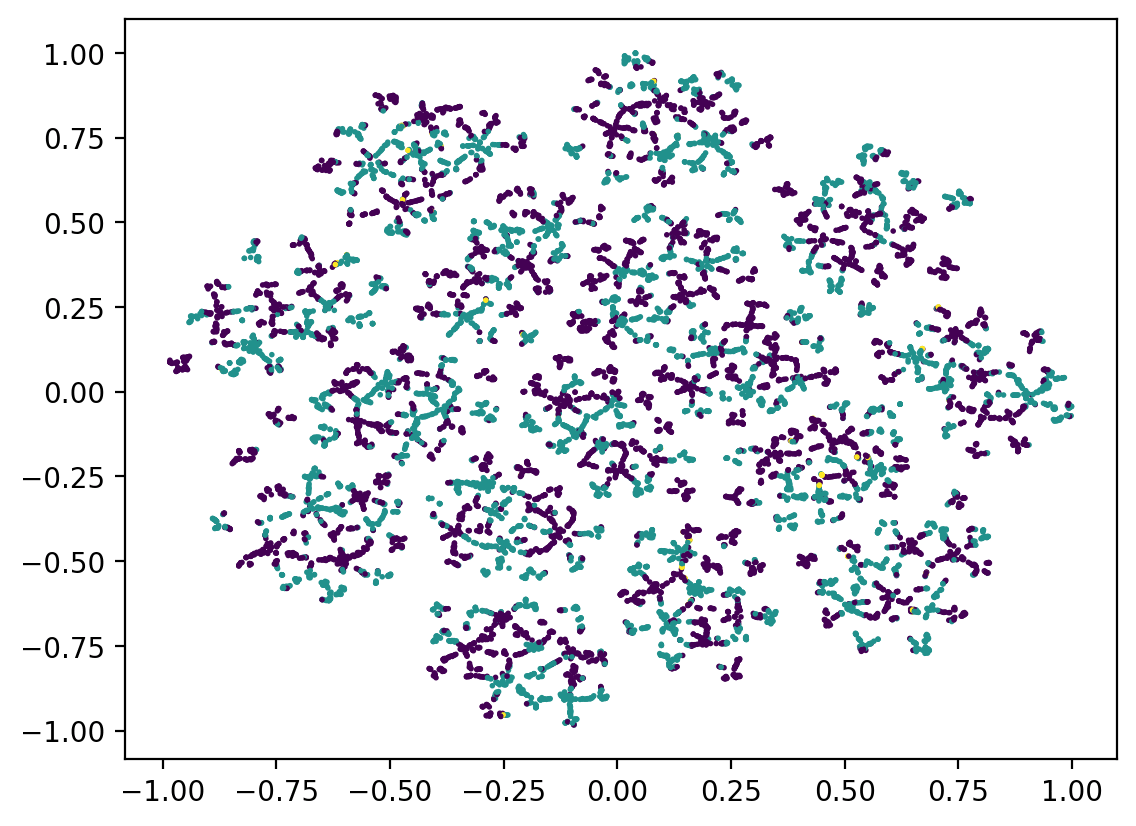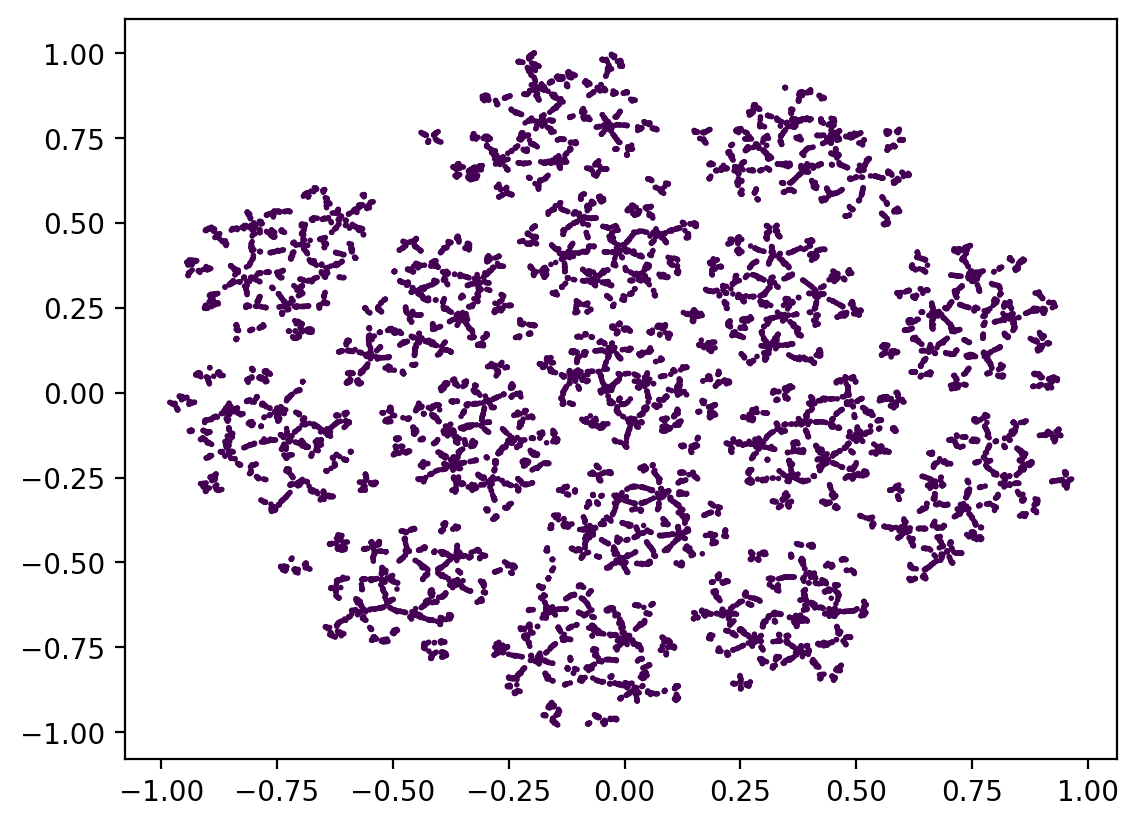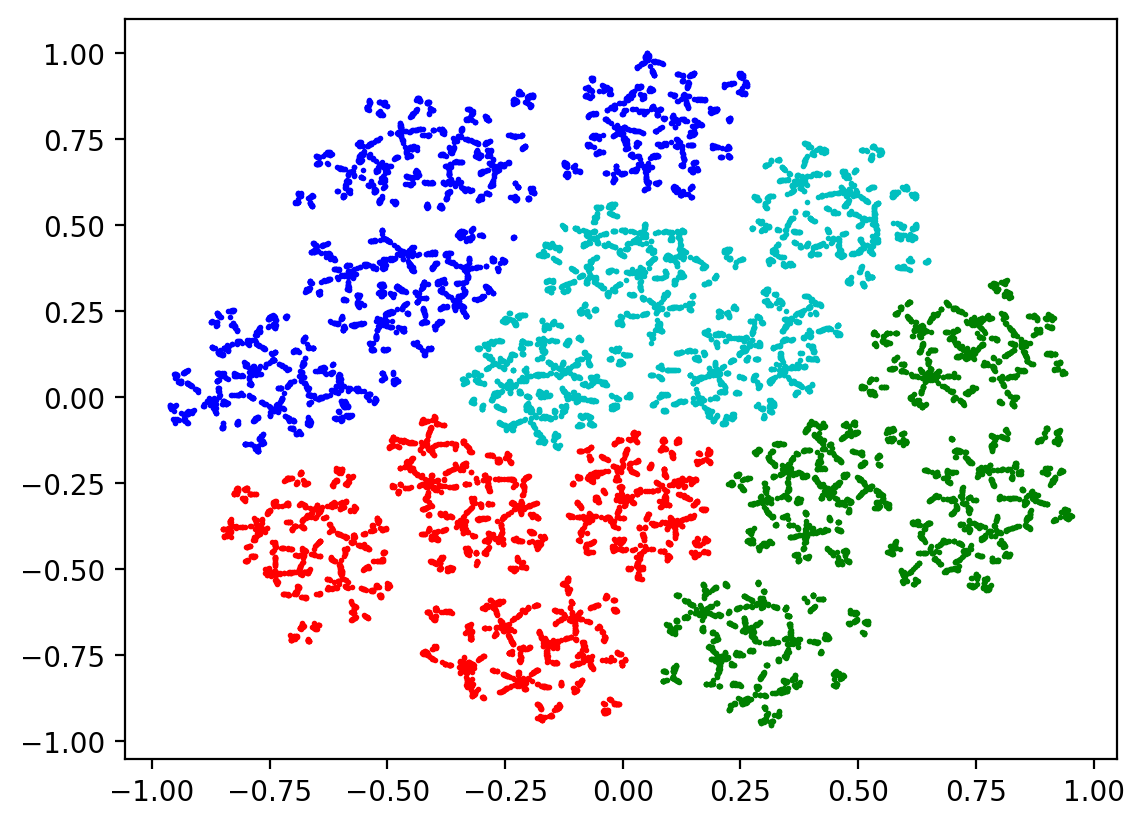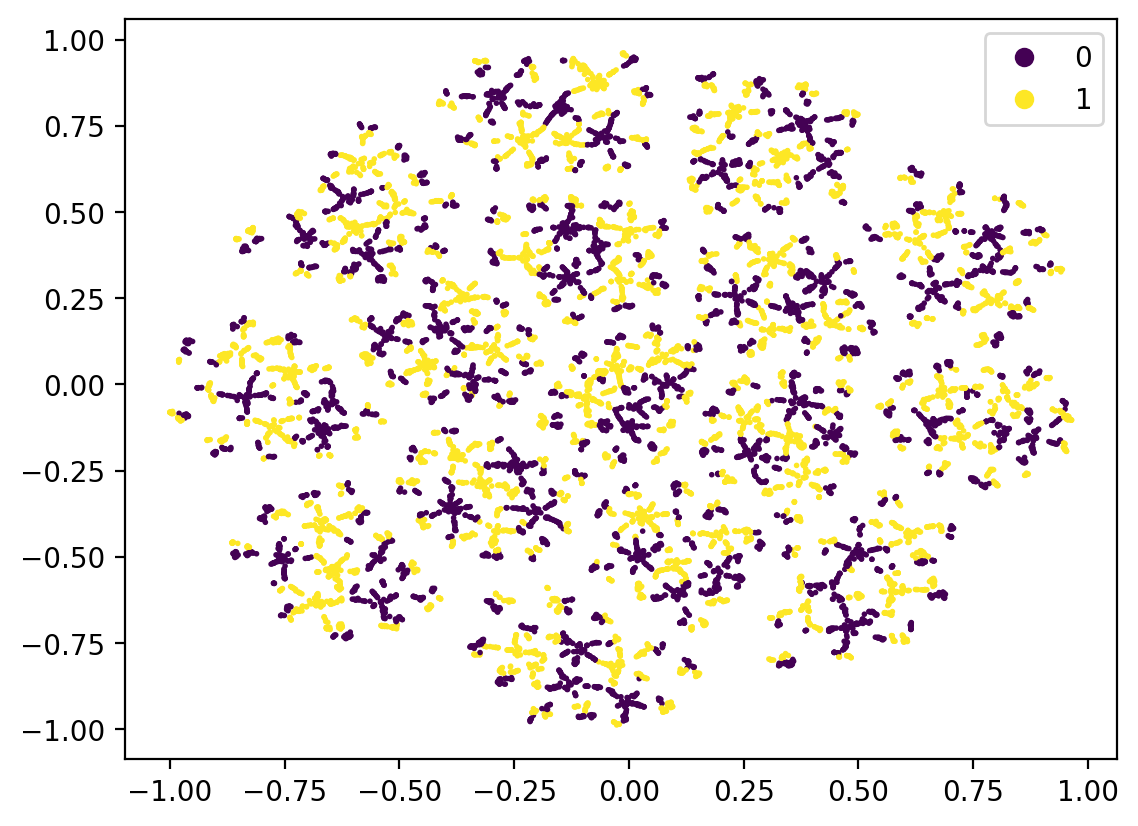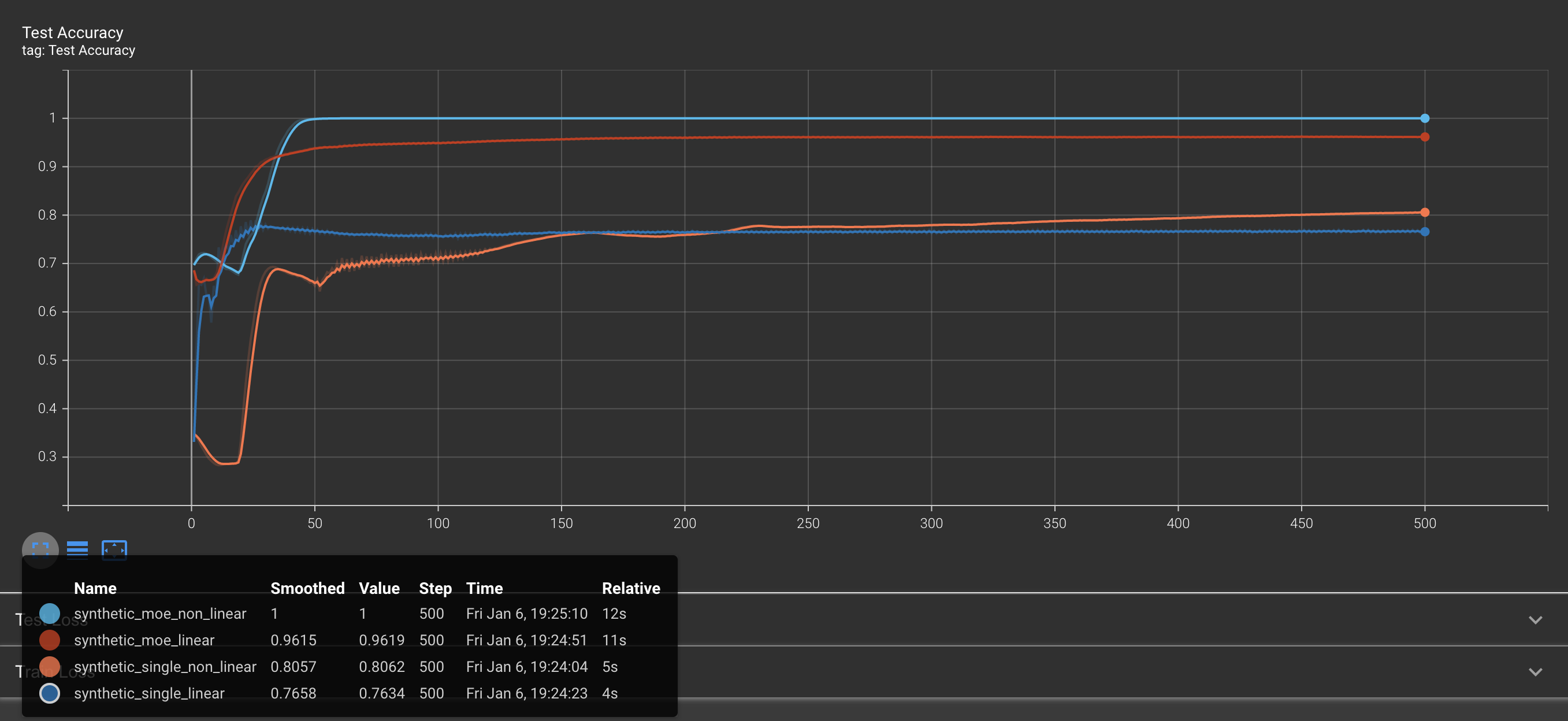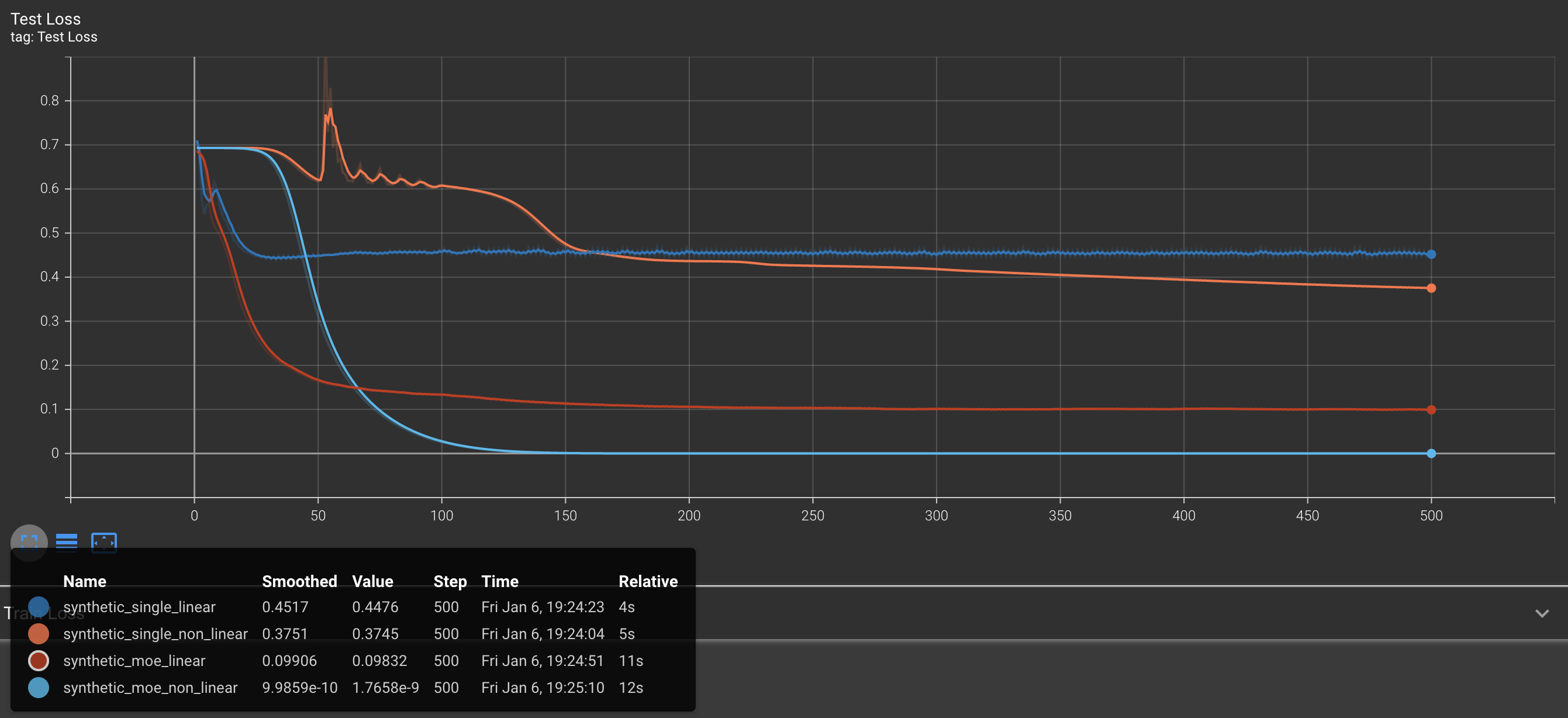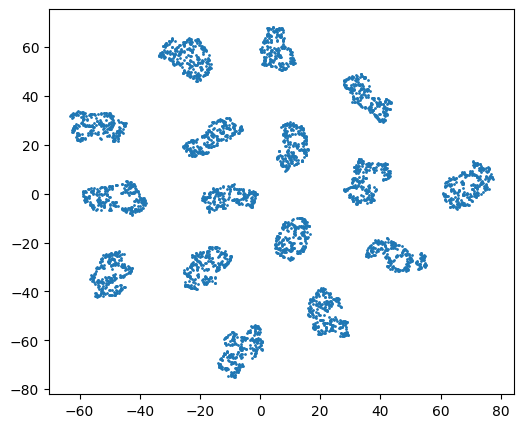This is my implementation of "Towards Understanding Mixture of Experts in Deep Learning" which is accepted at NeurIPS 2022.
Which still has a lot of work to do.
NOTE: I am not an author of the paper!!
Figure 1. A linear (left) and a non-linear (right) moe model that learns to dispatch data points to 8 experts.
Below is the tsne visualization of synthetic data.
Figure 2. Each color denotes a cluster in synthetic data
Figure 3. Labels on each data point in synthetic data
- Performance after 500 epoch
Figure 4. Accuracy and loss graph on each setting of model
| Test accuracy (%) | Number of Filters | |
|---|---|---|
| Single (linear) | 76.3 | 512 |
| Single (nonlinear) | 80.6 | 512 |
| MoE (linear) | 96.2 | 128 (16*8) |
| MoE (nonlinear) | 1.00 | 128 (16*8) |
- Add dispatch entropy evaluation
- Support on Language & Image dataset
- Replicate results on linear/non-linear MoE
- Fix synthetic data generation
- Add cluster label for entropy evaluation
@misc{https://doi.org/10.48550/arxiv.2208.02813,
doi = {10.48550/ARXIV.2208.02813},
url = {https://arxiv.org/abs/2208.02813},
author = {Chen, Zixiang and Deng, Yihe and Wu, Yue and Gu, Quanquan and Li, Yuanzhi},
keywords = {Machine Learning (cs.LG), Artificial Intelligence (cs.AI), Machine Learning (stat.ML), FOS: Computer and information sciences, FOS: Computer and information sciences},
title = {Towards Understanding Mixture of Experts in Deep Learning},
publisher = {arXiv},
year = {2022},
copyright = {arXiv.org perpetual, non-exclusive license}
}
